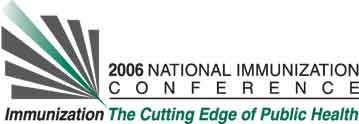Vikki Papadouka, Citywide Immunization Registry, Bureau of Immunization, NYC Department of Health and Mental Hygiene, 2 Lafayette Street, 19th floor - CN21, New York, NY, USA, Alexandra Ternier, Citywide Immunization Registry, New York City Dept of Health, 2 Lafayette Street, 19th floor, New York, NY, USA, Karen Fernandez, Assessment Unit, Bureau of Immunization, NYC Department of Health and Mental Hygiene, 2 Lafayette Street, 19th floor - CN21, New York, NY, USA, and Ukachukwu Nkwocha, Citywide Immunization Registry, 2 Lafayette, 19th Floor, New York, NY, USA.
Learning Objectives for this Presentation:
By the end of this presentation participants will be able to describe quality issues that emerge when data are transmitted from an office to a central registry.
Background:
The Assessment Unit in the New York City Bureau of Immunization conducts regular chart reviews in providers' offices to determine coverage levels and provide feedback for improvement. The NYC Health Code mandates that all immunizing facilities in NYC report immunizations given to the Citywide Immunization Registry (CIR).
Objectives:
To conduct a facility level assessment of accuracy and completeness of immunization data reported to CIR, identify source of error, and improve data quality reported to CIR.
Methods:
The assessment team reviews providers' charts for a random sample of the 2-year old patient population drawn from the CIR. Data from the chart are then compared to data found in CIR. Immunizations found in both the chart and CIR provide a measure of accuracy and completeness of the CIR. Up-to-Date (UTD) rates based on chart and CIR for 4:3:1:3:3:1 (4 DTaP, 3 Polio, 1 MMR, 3 HepB, 3 Hib, and 1 Varicella) are also compared.
Results:
To date, data from 16 private providers have been analyzed. 70% of the immunizations found by chart review were also found in CIR. The UTD status according to the chart data was 70%, whereas that of the CIR was only 15% because the majority of children were missing one or more immunizations. Factors that affect accuracy of CIR data, such as type of facility and method of reporting will be discussed.
Conclusions:
Data in the CIR were found to be 70% complete based on chart review data. UTD status based on CIR was 15%, whereas that of the chart was 70%. Efforts need to focus on increasing completeness of reporting in order to reach the goal of measuring UTD status using CIR data.
See more of Posters
See more of The 40th National Immunization Conference (NIC)

